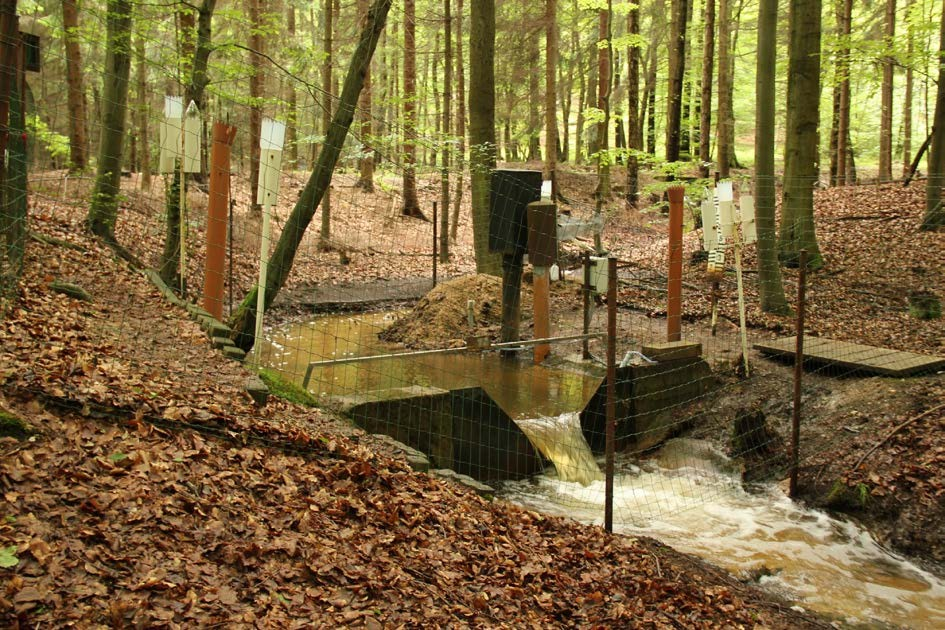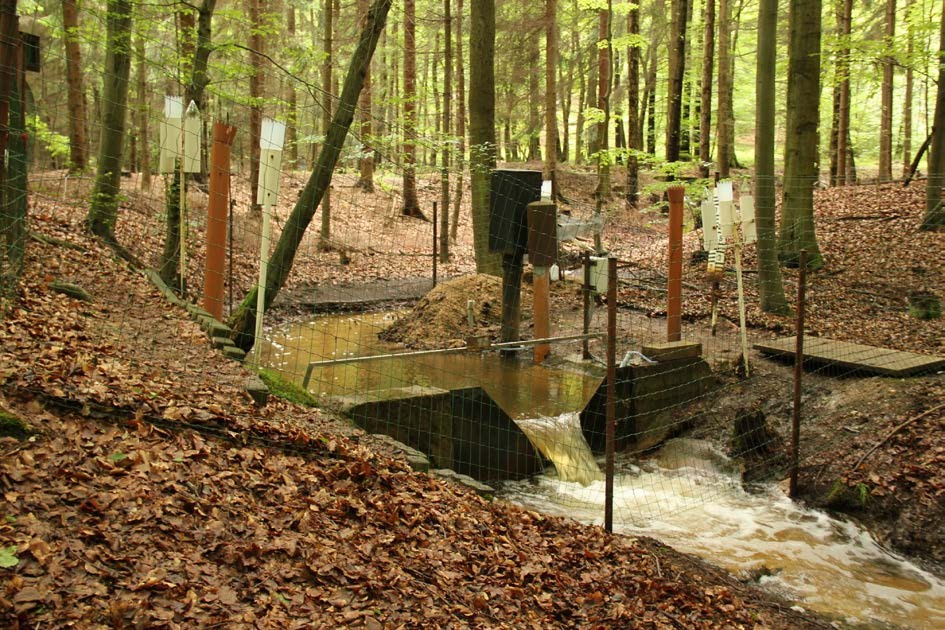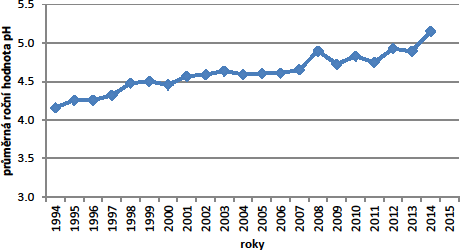Stonemasonry in the Říčany Region – Lesní potok, Part 1

asdads
In 2011 an ultrasound sensor measuring water flow, water temperature and conductivity was installed in the spillway of Lesní potok. The station, which is made by Fiedler-Mágr, sends the collected data at selected intervals via the internet. The same type of station also by Fielder-Mágr was installed in 2008 on the premises of a nearby school forest company. It measures precipitation, air temperature and humidity. Samples of surface water are taken at the spillway and then analysed in the laboratory.
Collectors VOSS (vertical rainfall collectors) developed by the Czech Geological Survey are used throughout the GEOMON network to collect rainfall in open area. Here the collectors gather the so-called throughfall precipitation in deciduous vegetation. The collectors equipped with glass cones do not belong to the GEOMON network; they are used to prevent leaves or needles from getting trapped in the collector because they would otherwise change the rainfall composition. There is another type of collector made of netting fabric that collects leaves and needles, because some elements are deposited predominantly this way. Near the spillway there is a 5 metres deep well filled with a 0.5 metre layer of a perforated inert material. The well is used for collecting samples of shallow subsurface water and continual measuring of the groundwater level.

Photo 7: Thomson spillway in the Lesní potok basin, a limnograph station, and collectors of throughfall precipitation. Photo T. Navrátil, 2016.
Once a month all the samples of precipitation are collected together with a sample of surface water and taken for chemical analysis. Following this pattern, the researchers were able to observe e.g. a significant improvement in the quality of environment in Central Bohemia since 1994. The average annual pH of precipitation in the open area around the Lesní potok basin in 1994 was 4.2 (CHART). As the atmospheric emissions of sulphur and nitrogen compounds were reduced by the desulphurization proces, the average annual pH value of precipitation increased to 5.2 in 2015. The decrease in pH was due to a decrease in the concentration of sulphate anions in the precipitation in open area between the years 1994 and 2015. If we compare the 1994 concentration of more than 4 mg/L with less than 2 mg/L in 2015, we see a 50% decrease. For nitrate anions the decrease was less significant, because a substantial part of nitrogen emissions originates from sources other than sulphur. Major sources of nitrogen emissions are diesel combustion engines and agriculture.

Barbora Dudíková Schulmannová, Vojtěch Janoušek, Tomáš Navrátil, Václav Rybařík and Pavel Vlašímský
